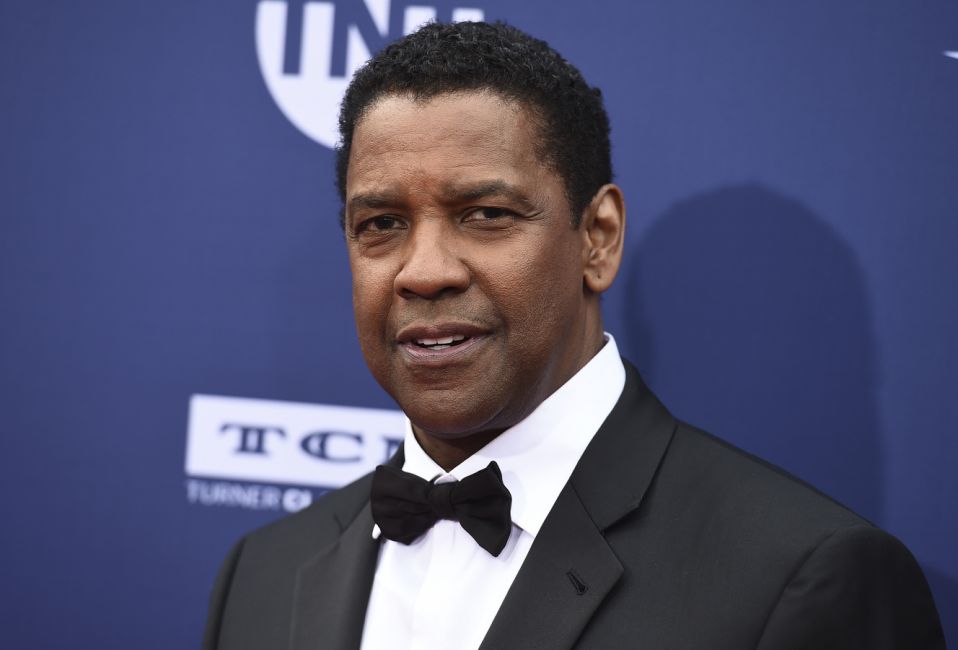The grey plaster on Denzel Washington’s “home” in Lobengula West has been peeling off over the years.
For over two decades, that plaster has put up a brave fight against weather elements, battling heavy rain, roasting sunlight or whatever else nature threw at it. Like a grey blanket, the plaster once jealously and efficiently protected the bricks used to build the five-roomed house back in the 1980s. But now that great grey blanket is old and torn.
Through it one can see the faces of the red, shiny bricks used to build this humble home.
Once upon a time, this home was the focus of the 1987 movie Cry Freedom, where it featured as South Africa liberation hero Steve Biko’s home. Denzel Washington played South African struggle icon. The role was Washington’s breakthrough role in Hollywood. This was Denzel Washington before the blockbuster roles, before the Oscars and before he became a Hollywood heartthrob that he had earned the adoration of millions of film lovers around the world.
His role was not an easy one. As an American, he had the difficult task of playing a well-known figure from all the way around the world. He had probably never spoken a word of Zulu or Xhosa. The production team’s task was equally unenviable. They had to bring the turmoil, blood and heartbreak of apartheid-era Soweto (South Africa) to the fairly recently liberated streets of Lobengula West (Bulawayo, Zimbabwe). Due to South Africa’s political troubles at that time, the film could not be shot in that country.
That house, which today still stands proudly on a street corner in Lobengula West has, since the day film crews packed up their equipment and left, has been known as Steve Biko’s house. Almost everyone, young and old, has a story to tell about that house.
“I only came to live here in the 1990s and by then I was already a teacher in Magwegwe,” recalls current house owner Ms Sibonginkosi Moyo.
“When we got here however, people always made it a point to tell us what had happened. They would narrate that people used to run and up and down the street and get chased down. They would tell us about the dramatic things that happened around the houses and how things were demolished to accommodate the film production that basically took over the neighbourhood. To people around here, this has always been Steve Biko’s house. They have never forgotten about that experience even though it was a long time ago,” she said.
At the time that the movie was shot, few knew who Denzel Washington was. In fact, the man who was set to play Steve Biko never set foot in the house that was meant to be his. Two houses were demolished and rebuilt many times over as directors tried to create an accurate picture of a South African majority rising up against minority apartheid rule.
“Cry Freedom had a big budget and you’d see houses getting demolished and within the next take the houses would have been rebuilt,” recalls Pedzisai Sithole. One of the first products of Amakhosi Cultural Centre. Sithole was one of the local actors that had been picked up to work as a stunt man in the movie.
“We would break glasses and there were people who would repair them. When they said cut, they would run and fix everything. And it was then that I said — this I want to learn,” he said.
According to Sithole, most of the cast members had only became aware of the fact that they once starred in a movie with Washington in later years when he became one of Hollywood’s most recognisable faces.
“We were just picked from Makokoba where were still doing karate. We were used to the karate way of doing stunts so were just kicking each other. We were trained by a stunt co-ordinator called Peter Brest from the UK. To be in a professional set-up was great. We didn’t know that we were in the same movie with Denzel Washington but we only found out later. When we were shooting, we didn’t know that he was to star in the movie,” Sithole recalls.
 |
| Denzel Washington |
“They would come all the way from the (Lobengula youth) club to our houses and get water,” Gogo Enilly Karanda recalls.
“They would give us some money then go back to the houses where they were mainly filming. The houses used were one that belongs to Mrs Moyo and another that belongs to Mr Ngwenya. Those were the houses on which they had put curtains.”
Only a few years after Zimbabwe’s own war had ended, Gogo Karanda says the sound of gunfire and the sight of fire had some hiding under their beds in fear. Could those bad old days have returned?
“They would start shooting and people would be running all over the place, running up the streets. Then those houses that they had just left behind would be burnt. The houses would burn and all of a sudden, the curtains would be gone and then they would fix the houses quickly and in no time, they would look beautiful, just like they had been.
“At that time, we also began to enjoy following proceedings because we realised that it was all a film. There was no one injured and no one died. At the time I was selling things by the corner and my husband would get stock and sell from near the club. There was a lot of gunfire and a lot of running and at that time I remember we were worried that what had happened during the time of the war had now once again returned to terrify us,” Gogo Karanda said.
Amakhosi founder Cont Mhlanga, who worked as a crowd controller for the scenes shot in Lobengula West, says the filming process had a lasting impression on a cultural centre that was, at that point, still in its infancy.
“On the day of the shoot, Lobengula was literally shut down. Half of Magwegwe towards the Magwegwe Youth Club were also shut down. Near the shops at Konron there’s a little space there and that’s where kids were running and they were “shot” by the Boers. In that crowd, there we specific actors that were being looked for by the cameras. You had young Amakhosi actors like Simba Mugadza and Pedzisai Sithole who were all very young at the time. We learnt a lot of things there and became the talk for weeks and months at Stanley Hall when we would meet.
“Set construction is a great part of any production and what happened on that particular occasion was that the suburb itself was still relatively new. So, some people had to be moved and get booked into hotels around the city.
Actors moved into their houses and those houses that cops backed into while chasing children, those houses became the stunt houses,” he said.
When Cry Freedom was released, grossing US$15 million at the Box Office, Denzel Washington’s career got the kickstart it needed. The owners of houses that were demolished got newly built homes — bigger and better than what they previously had. For the stunt actors, directors and producers working on set, the experience they got from the experience was invaluable.
“That generation of filmmakers from the country were all inspired and influenced by these big productions that came to film in the country during the 1980s. I would say we were the lucky ones to work with the big production houses from around the world. A lot of us who later rose to prominence in the field of film and television met around those film sets.
For example, Godwin Mawuru, who later founded Studio 263, we met at Amakhosi and we just started to rhyme and learn from those big film sets. We were at school although we didn’t know it,” Mhlanga said. The Sunday News
















